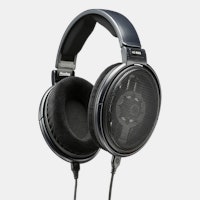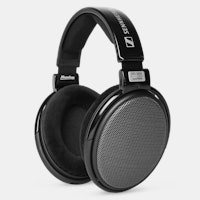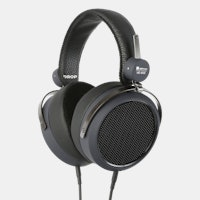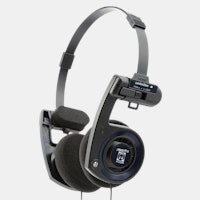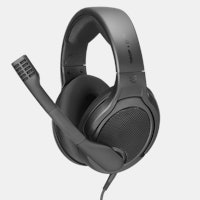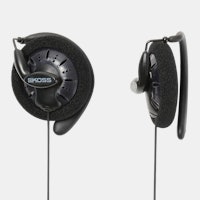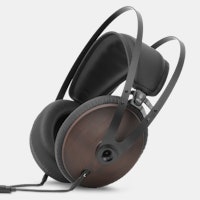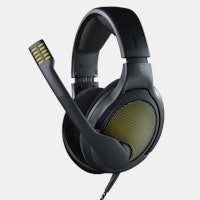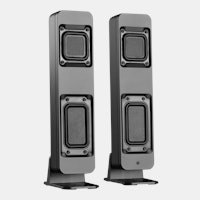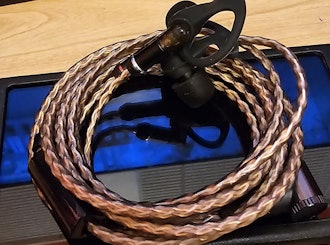Click to view our Accessibility Statement or contact us with accessibility-related questions
















Showing 1 of 8 conversations about:
Massdrop 101: The Benefits of Custom In-Ear Monitors
By

Drop+Audiophile

ralphgonz
50
Nov 6, 2018
I apologize in advance for my characteristic skepticism, but it is based in a math, engineering, and acoustics background...
Conventional over-ear headphones require only a fraction of the power handling of loudspeakers, and also eliminate dispersion and room interaction concerns as well as the challenge of controlling enclosure resonances. This allows a single high quality driver to cover the entire audible frequency range, and allows a set of $500 Sennheiser HD-650's to compare to $8,000+ full-range loudspeakers. (Check out the prices of Stereophile's Class A recommended components in these two categories.)
In-ear monitors take this even further, reducing power requirements due to the extreme proximity of the driver to the ear canal and further reducing bass cancellation and ambient noise effects. This should translate to further reductions in price, yet manufacturers have managed to convince buyers they need to spend a lot more to get meaningful improvements in sound quality and comfort. The most ludicrous "feature" is multiple drivers: A tiny IEM transducer should be able to operate as an near-ideal piston over the entire audio range, so why shoehorn the complexity, cost, and sonic degradation of a crossover network into the design?
It is a much greater engineering feat to make a great sounding pair of loudspeakers for $1000 than it is to make great sounding IEMs for -- say -- $100. IMHO diminishing returns set in quickly above this price point.

phoenixsong
1055
Nov 7, 2018
ralphgonzInteresting perspective- personally I have a preference for single dynamic driver iems as well. However, I wouldn't say it is an entirely fair comparison that you made. Following the line of your argument, shouldn't loudspeakers only require a single woofer and do away with their tweeters?

ralphgonz
50
Nov 7, 2018
phoenixsongGood question -- it would certainly be desirable to use a single driver in loudspeaker design as well, to avoid dealing with the expense and complexity of combining multiple drivers using passive or active crossover networks. Unfortunately this is not possible except in narrow applications...
Firstly, producing bass frequencies in a typical listening room requires a driver that can move a lot of air. A high-excursion driver with diameter of 5" or 6" is the bare minimum, and producing deep, loud bass comparable to inexpensive headphones requires a subwoofer class 10" to 15" driver. Secondly, producing wide dispersion treble frequencies requires a low-mass diaphragm with well-controlled breakup modes and diameter of 1" or less.
That said, speakers using a single 3" to 4" driver have had a cult following for decades and are suitable in some applications. For example, desktop speakers intended for low-volume nearfield listening in a fixed listening position can forego power handling and dispersion, particularly with bass-light music recordings.
And hobbyists often experiment with speakers consisting of arrays of many identical small full-range drivers arranged as a 6-foot or 8-foot line source, with no need for crossover components. This configuration provides good horizontal dispersion and is tolerant of vertical listening position, while the combined surface area provides much greater power handling. This is an expensive design however, with limited commercial appeal.

phoenixsong
1055
Nov 8, 2018
ralphgonzI see, so the extra demands are mainly due to the distance involved

ralphgonz
50
Nov 8, 2018
phoenixsongIn a nutshell. We perceive loudness according to sound intensity level (not sound pressure level). This falls according to the inverse square law with distance, so doubling the distance to the source reduces perceived loudness by a factor of 4. If a IEM diaphragm is 1/2" from your ear drum compared to a speaker that is 128" away, then the speaker requires 65,536 times as much power or 48 dB on the decibel scale.

EdinNJ
271
Dec 15, 2018
ralphgonzNope. Not true. I've got five pairs of CIEMs that I love, they sound amazing. I've got four pairs of IEMs where I had custom silicone tips made. Only one of the single driver IEMs sounds anywhere near the quality of the multi-driver CIEMs, and that's the top end Etymotic. And they're not $100. I've got $150 Etys and they're not even close - and, I'm using the same custom fit silicone tips that Ety recommends on both, so the tips aren't the difference.
That said, I've got one set of CIEMs with 10 drivers a side, one of five per side, one of three per side. The top of the line Etys, single driver, are very, very close to the three per side. They're also only about 40% less in cost (including custom tips... and the perfection of fit is a HUGE determinant of in ear sound quality) than the three driver units.
Really, it's very much like my speakers. I have five listening spaces (photography studio, editing and printing work area, family room, bedroom, living room) with speakers. I've got a set of very exotic single driver speakers. I've got a couple two driver, one three driver, and one 8 driver speakers. The single driver units are not the best, even though they cost more than the two driver, and three driver speakers.
Engineering skill (versus engineering theory) isn't insignificant. Besides what I talked about above, I also have three sets of CIEMs that I never use, because they suck. Live in my desk drawer. All of them were made by people who were legends in the CIEM world. They weren't cheap at all... although one of them I got at a huge kickstarter discount, the other two were sent to me for review. One one driver, one two driver, one three. Really, they're awful. Two drivers and incoherent sound. One driver and incoherent sound. Driver count doesn't define anything other than driver count. Not even coherence.
My point is - I have real world experience that says your well argued theory doesn't match the real world. As a lifelong quant - meaning, I've worked in a crazy number of disciplines creating or fixing the analytics - I have a rule of thumb. Any position that posits a linear relationship, particularly based on some concept of physics, is flawed. We can talk quantum effects in molecular biology if you want... that was my last quant gig.
but simpler yet... Multiple drivers, with well engineered crossovers and well engineered driver placement, will outperform the simplicity of single drivers. Speakers, IEMs, CIEMs.

ralphgonz
50
Dec 16, 2018
EdinNJThanks for the detailed reply and for the description of your experience with IEMs. I just want to point out that I did not say that single-driver speakers are better than multi-driver speakers. My post was about headphones and IEMs. You can not make blanket statements that apply both to headphone design and to loudspeaker design.
In headphones and IEMs a single driver is able to provide suitable listening levels while covering the entire audible frequency band. Real world multi driver systems are much more complex than single driver systems and as you correctly pointed out cannot be modeled as linear systems. Why would manufacturers add this complexity? I believe that in many cases this is used as marketing one-upmanship such as digital camera manufacturers used to do with megapixels. Nonetheless I'm sure there are high-end manufacturers who produce legitimate multiway designs and I'm sure these can sound wonderful.
Incidentally without getting into my own academic and professional qualifications you are incorrect in implying that my post was based on theory rather than decades of real world engineering experience.
(Edited)
PRODUCTS YOU MAY LIKE
Trending Posts in Audiophile
itsamepe
Sennheiser PC37X randomly goes bad after disconnecting the cable ?
Greetings, Yesterday I was using my headset like normal with my macbook, just listening to music and on a call with people like usual, and the headset was perfectly fine. The stock wire that came with the headset is extremely long and yesterday it annoyed me very much that it kept getting tangled with itself, so I decided to see if the cable is replaceable. I pulled out the cable from the headset and saw the adapter, and looked online for a replacement. Upon plugging it back in, the audio sounded extremely muffled and washed out. Im not sure what I did wrong to make it mess up like that as I've always taken good care of it, ive had it for about 2 years and its always just been chilling on my desk, but anywho I thought the cable just went bad and ordered a replacement. The replacement came, and the issue is still persistant, so I am not sure what the issue is I've tried multiple different headsets and the issue is not with the port, and I also tried it with my windows laptop and...
Apr 23, 2024

MrChiSox
Big changes coming to my tiny little music room, I've recently purchased a new stack. Currently figuring out where to locate it all and ordering up the necessary cables, it won't be too long before I'm up and running. I am now the proud owner of a brand new stack. It's a European brand called Earmen. Amp, DAC, Streamer & Linear Power Supply. It won't be long!
https://www.youtube.com/watch?v=MB15yM4UptQ
Apr 23, 2024

Briankan
Recommendation for my next headphone set? I have Koss 95x
Hey all, What would you recommend I get next and why? I have Koss ESP-95x electrostatic massdrop headphones. These are my first and only audiophile set. I love them. I think my only real requirements is $500 or less for the headphones and that they have a little more low end. I don’t need thump but these are really light on lows…but the experience is still awesome. Also any recommendations on an amp? I only have my electrostatic thingy. I am using the Topping D50 DAC. thx!!
Apr 22, 2024

Simthaniel
Rigs
Modded headphones with qudelix at the core
When I received the Qudelix 5K, I had already modified a pair of Superlux HD-681 headphones. I previously soldered my own balanced connections to the drivers, providing multiple ways to connect and...
Apr 14, 2024

brothamike
A decent set of IEMs
I am in the midst of a 300 hour burn-in but, I will say I am enjoying how this set sounds so far. Before I received these which was btw late by a few weeks, I purchased a Sony/Kimber Kable MMCX...
Apr 12, 2024
merrick97
Should I exchange the PC38X for better headphones?
I bought the PC38X headphones FOR GAMING and they are great, but I have NO use for a Microphone since I don't do competitive gaming and I was wondering if there were better headphone options at a similar price without a headphone, where (presumably) more of the cost was put into making it sound better. I also find that my PC38X don't get quite as loud as I would like and I was wondering if a cheap amp like the iFi Go link would draw a little more volume out of my phones. https://www.amazon.com/dp/B0BN6MM822?psc=1&ref=ppx_yo2ov_dt_b_product_details I went with the PC38X since it was considered the best bang for buck headphones. I care most about using spatial apps like DOlby Atmos and DTS Headphone:X. Suggestions are welcome.
Apr 11, 2024

LostnAmerica
Sound Signature of the Grell Project.
Wondering what type of sound signature the Drop Grell project headphones will have or trying to attain. Any update would be appreciated.
Apr 8, 2024
